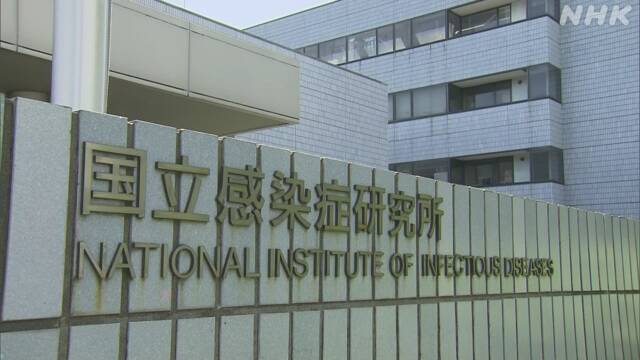A new mutant virus that combines two types of Omicron strains, which has not been confirmed overseas, was confirmed in one patient who was confirmed to be infected with the new coronavirus in Sendai City.
This patient recovered without becoming severe, but the Ministry of Health, Labor and Welfare is investigating the infectivity.
What was confirmed is a new mutant virus that combines the Omicron strain "BA.1" that spread in the 6th wave and "BA.2", which is said to be more infectious.
According to the Ministry of Health, Labor and Welfare, etc., as a result of analyzing the gene of the sample at the National Institute of Infectious Diseases on the 15th of this month for one patient confirmed to be infected in Sendai City, it was found that it is a type that has not been confirmed in Japan and overseas so far. I did.
Patients with confirmed infections developed the disease late last month, but have recovered without becoming severe.
In addition, he has no recent history of staying abroad and may have been infected in Japan.
The mutant virus confirmed this time is different from the type called "XE", which is a combination of "BA.1" and "BA.2" found in the quarantine at Narita Airport last month, and is different from the conventional Omicron strain. It is not known if it is pathogenic or infectious.
According to the National Institute of Infectious Diseases, "As the replacement of BA.1 to BA.2 progresses in Japan, it is possible that the same person will be infected with two types of viruses and genetic recombination will occur. We are investigating, but we have not confirmed the spread of the infection at this time, so we do not see it as a particular concern. "
What is this new type?
The new coronavirus detected this time is a combination of "BA.1" among the Omicron strains and "BA.2", which is said to be more infectious, and is a stepping stone for the new coronavirus to infect cells. It means that it is divided into "BA.1" and "BA.2" with a part of the spike protein as the boundary.
The new coronavirus is changing repeatedly as it spreads all over the world, and when one person infects multiple types, gene recombination occurs, and a type called "recombinant" with the characteristics of multiple viruses New mutant viruses may be created and have been reported from all over the world.
As a type similar to the virus detected this time, there is a type of virus called "XE" in which most of the virus containing spike protein is "BA.2" and the other part is "BA.1". "XE" has been detected in airport quarantine in Japan, and according to the UK health authorities, the rate of increase in infection is 12.6% higher than that of "BA.2", and in the UK in 90 days until the end of April. 1294 cases of infection have been reported.
Expert "Isn't it possible that the infectivity will change significantly?"
Atsuo Hamada, a specially appointed professor at Tokyo Medical University who is familiar with overseas infectious diseases and mutant viruses, said about the virus detected this time, "If you are infected with different types of new coronavirus at the same time, recombination may occur in your body. The person who did this was found at the end of March, when the replacement of "BA.1" and "BA.2" was occurring, so it is no wonder that recombination has occurred. However, the person who first found the recombination. I don't know if it happened in my body or in someone else's body. "
Regarding the infectivity of the virus found this time, "It is undeniable that it may affect the infectivity, but looking at the status of other recombinant viruses, the infectivity does not change significantly. However, it is important to continue monitoring in each area because similar recombination may occur in other areas. It is not a situation that each person is concerned about, so far. It is important to continue the same infection control measures as above. "

